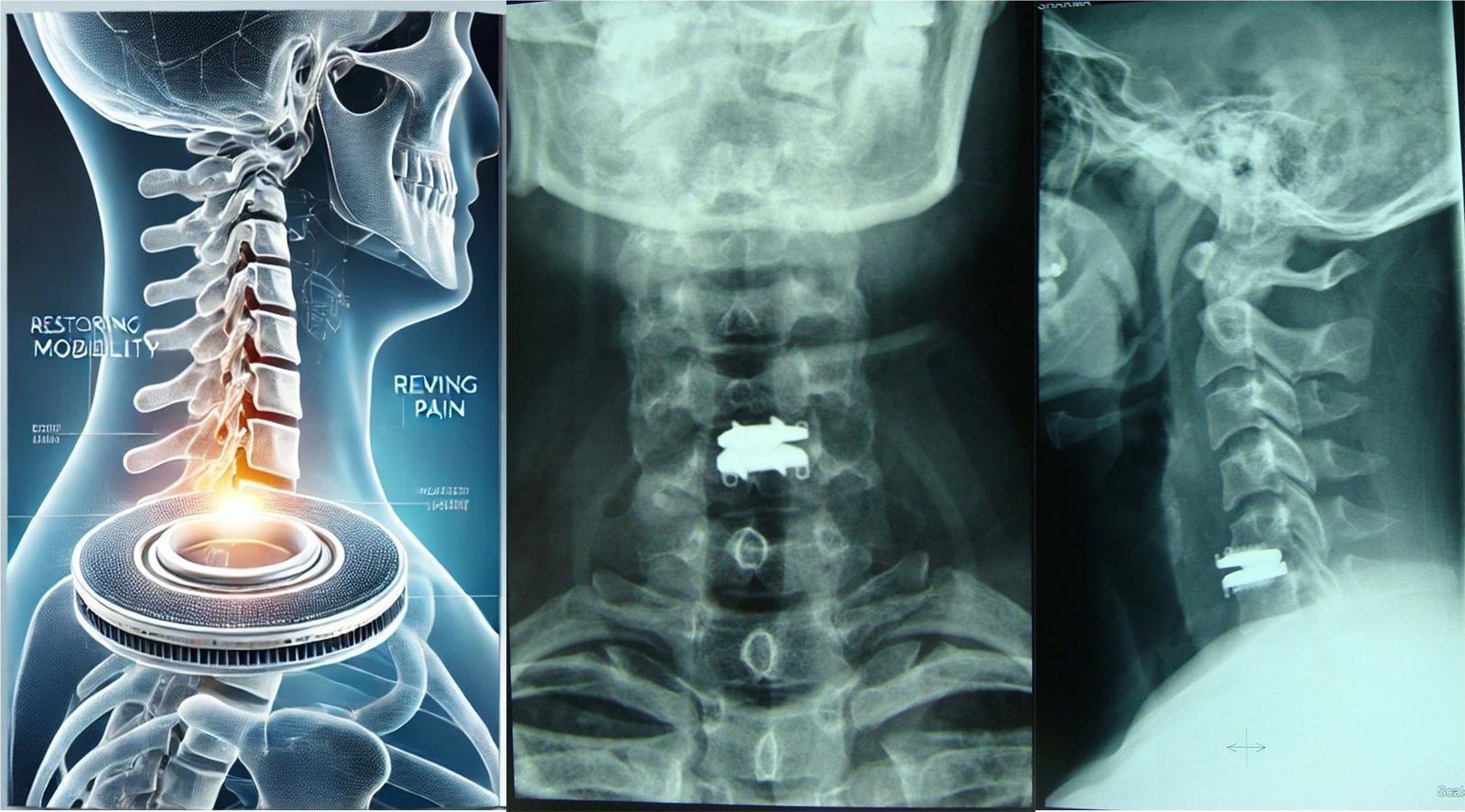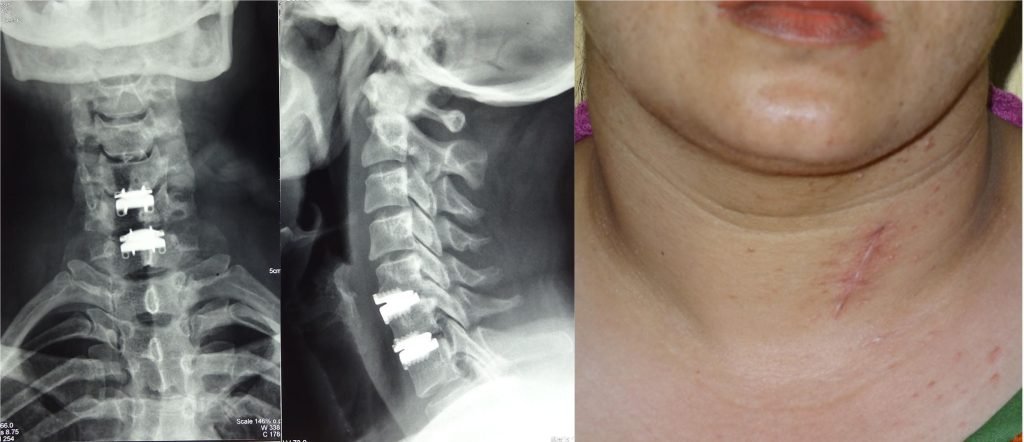

Who is a Candidate for Cervical Disc Replacement?
-
Have a single level disc problem in the cervical spine (neck).
-
Are experiencing neck and arm pain due to a damaged disc.
-
Have not found relief with non-surgical treatments.
-
Are in generally good health and are not candidates for spinal fusion.
Benefits of Cervical Disc Replacement
-
Pain Relief: Helps to reduce neck and arm pain caused by nerve compression.
-
Maintains Motion: Unlike spinal fusion, which limits neck movement, disc replacement allows the neck to maintain its natural range of motion.
-
Quick Recovery: Most patients experience less discomfort and a quicker recovery compared to traditional fusion surgery.
-
Long-Lasting Results: The artificial disc is designed to last for many years and provide durable pain relief.
Recovery After Cervical Disc Replacement:
-
Hospital Stay: Most patients stay in the hospital for one or two days after the surgery.
-
Initial Recovery: A soft collar may be worn around the neck for support for a short period.
-
Return to Activities: Patients can usually return to light activities and work within a few weeks, with more strenuous activities taking a bit longer (around 3 to 6 months).
-
Physical Therapy: A tailored rehabilitation program is often recommended to help restore strength, flexibility, and function to the neck.
The Procedure
In Cervical Disc Replacement surgery, the damaged disc is removed and replaced with a specially designed artificial disc made of materials such as metal and plastic. The goal is to maintain the normal range of motion in the neck, unlike fusion surgery, which limits motion by joining two vertebrae together.
Steps Involved
-
Anesthesia: The patient is given general anesthesia to sleep through the surgery.
-
Incision: A small incision is made in the front of the neck to access the damaged disc.
-
Disc Removal: The damaged disc is carefully removed, and any pressure on the surrounding nerves is relieved.
-
Artificial Disc Placement: The artificial disc is inserted in place of the old one. The new disc is designed to mimic the natural motion of a healthy disc.
-
Closure: The incision is closed with sutures, and the area is bandaged.



